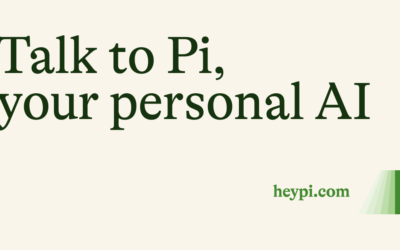Neuro-developmental (ND) disorders are difficult to discuss because most have negative feelings associated with them. There are those who see children or adults with these disorders as “damaged” goods, and this is not the case at all. Most of these people can have fulfilled happy lives with proper attention and care. However, this does not mean there is a lack of hardship, each individual requires specific attention and with that, there is trial and error. Patience is key when discovering what works and what does not work regarding treatment and quality of life.
ND disorders are ingrained in the individual from birth and can become active in the first two years of life. At one point in the development of the child, the central nervous system did not develop correctly, thus creating problems with cognitive functioning. This is when we start to see disorders such as Attention-Deficit/Hyperactivity Disorder (ADHD) and Autism Spectrum Disorder. Not all children develop these two specific disorders, but we will discuss them in depth. We will also discuss several other known Neurodevelopmental Disorders.
Autism Spectrum Disorder
Simply put having Autism means that the individual has difficulties interacting in social situations, difficulty with communication and behavioral issues. These individuals do not have the skills to interact with society unless they are worked with and taught over time. There will always be a cap on what this individual can and cannot do. This does not mean there will not be any improvement but each individual can only improve so much. It really depends on where the person lands on the spectrum. This is the main reason we use the term “spectrum” because there is such variance when it comes to autism that we cannot put a one size fits all label on the disorder.
Attention-Deficit/Hyperactivity Disorder (ADHD)
A common misconception about ADHD is that there is a disorder called “ADD” which is used interchangeably. There is no such disorder called “ADD”, it is not recognized in the DSM 5. One problem with this disorder is the parents who assume their child has ADHD without the actual diagnosis from a healthcare professional. They often then use ADHD as an excuse for their child misbehaving in class and at home. If you feel your child does have this disorder take them to a clinician to get an actual diagnosis so that they can then get the treatment they need to function optimally.
There are two subtypes of ADHD: Inattention and Hyperactivity/Impulsivity.
Inattention is the first subtype that can define ADHD, the overall theme is that the individual cannot stay focused on a given task. This creates issues in school due to being distracted by multitudinous stimuli. It can often make the child feel like they are “dumb” and cannot do what the others in their classes can. This is not the case at all, they are intelligent they just need some help with focus. Once they are on the correct medication they typically are able to focus and excel in their classes.
Diagnostic Criteria:
- Lack of attention to details
- Lack of sustained attention to tasks at work or play
- Highly distractible
- Does not seem to listen when spoken too
- Does not follow through with directions or instructions leading to failure of chores, school work or duties in the workplace
- Difficulty organizing tasks/activities
- Often losses items (glasses, keys, wallets, pens, pencils etc)
- Avoids tasks that require mental effort
- Forgetful of daily activities (errands, chores and for adults and older adolescents this may include paying bills, keeping appointments and returning phone calls)
Hyperactivity and impulsivity is the second subtype. This subtype is hard to recognize in adolescents in grade school due to the energy level most children demonstrate. Most children show signs of fidgeting and excessive energy, however, it is when the symptoms intrude on everyday living that we should consult a mental health professional.
Diagnostic Criteria:
- Fidgets, tap’s hands/feet or squirms in seat
- OFTEN leaves seat when being seated is expected
- Runs about or climbs in inappropriate settings
- Unable to play or engage in activities quietly
- “On the go” or “driven by a motor” (unable to be still for extended periods of time)
- Excessive talking
- Cannot wait for their turn in conversation, answers questions before being completed and completes peoples sentences
- Difficulty waiting for turns (lines, conversations, games)
- Often interrupts or intrudes on others
With ADHD there is a subtype that is a combination of both Inattention and Hyperactivity/Impulsivity. This means that there is a combination of both subtype symptoms that are present for at least 6 months.
Specific Learning Disorders
Having a specific learning disorder means that there is a specific area of development that failed to develop. The areas that are underdeveloped would lead to problems in academics. There are three specific learning disorders that most people know about and they are Dyslexia (Reading Disorder), Dysgraphia (Writing Disorder) and Dyscalculia (Mathematical Disorder). These disorders can be difficult to identify in children because they can learn coping mechanisms, such as getting out of reading tasks, having another child help them with their work and even making up their own codes to decipher what is needed for a specific task. The coping mechanisms will help for some time and get them by in their studies, however, there will come a time when they no longer are able to hide their disorder.
Diagnostic Criteria:
- Inaccurate, slow, effortful reading
- Difficulties in understanding what has been read
- Difficulty with spelling, written expressions
- Difficulty mastering number sense, number facts or calculations
- Difficulty with mathematical reasoning
Motor Disorders
Motor disorders occur when there is damage to the nervous system resulting in abnormal or involuntary movement. With this type of disorder, there is always a chance that the individual can cause damage to themselves as well as others. Not on purpose but due to the nature of the involuntariness of their specific disorder.
Developmental Coordination Disorder (Rare)
This disorder is identified and diagnosed around the ages 6-13, this is due to children being clumsy up until a specific developmental marker. The child would have delayed reactions when sitting, standing or jumping and difficulties with finer motor skills such as tying shoelaces, catching objects, using scissors or cutlery, handwriting, riding a bike, or participating in sports. This disorder usually carries into adulthood, but there are occupational and physical therapies that can help with coordination.


